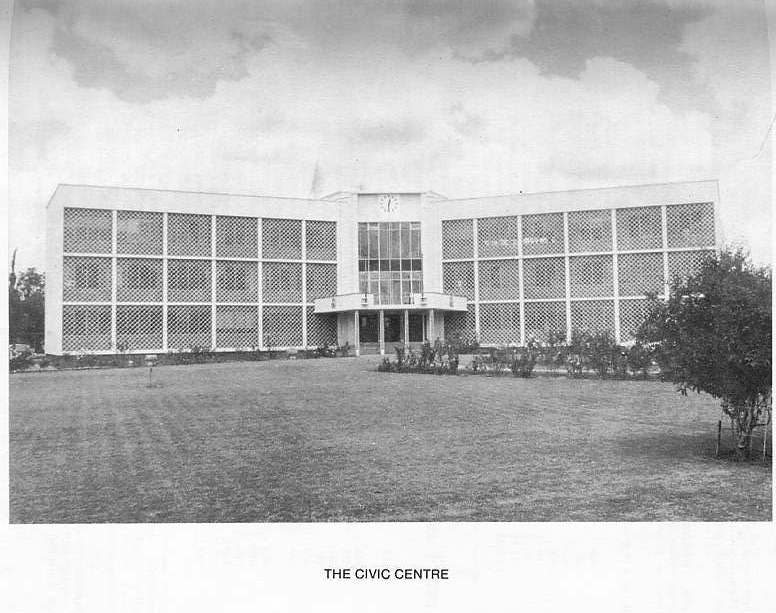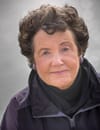Charm?

Que Que’s new Civic Centre at the head of Main Street, designed by Vic Jenkinson, one of John Austen’s grandsons
Charm?
After the WWII it took someone with the long view, coordinated planning and a bold financial plan for Que Que to reach its potential and garner the many secondary industries stemming from the development of the iron and steel works at Redcliff. Street lighting, paved roads with sidewalks, a sports club and of course water born sewage and a reliable water supply to support it were minimums needed to attract industry. It all came about with much opposition from vested interests. There was a government enquiry that rocked the nation and hit the headlines of the national newspaper The Salisbury Herald. But once the infrastructure was in place industries came, one by one.
Charm?
By 1967 Vic Jenkinson, one of John Austen’s many grandchildren, was installed as mayor of Que Que, and then again in the 1970’s.
The idea of building a grander Civic Center was batted about on Council. Vic was tasked with drawing the plans. After many months and many different designs, he went to Council for approval. As he had a vested interest in the proceedings, he stood outside the Council Chamber like a naughty schoolboy whilst the Councillors decided whether they approved or not.
In due course, the new fangled president came to open the new modern Civic Centre, at the head of Main Street. Vic’s name was now ‘on the map’. Awards of the David Whitehead Cotton Ginnery design contract at Hartley and Spinners Cotton Company factory in Gatooma followed. He went on to complete many other jobs in the Midlands/Fort Victoria area.
However, Vic’s favorite design project was the hospital at Kariba. As a young graduate from the University of Cape Town, Vic was the first architect on site whilst the mighty dam, the world’s largest at the time, was being built in the late 1950’s. He pored over the drawing in the searing heat of the gorge cocooned in a tin shack of an office. Perspiration poured requiring towels to be draped over the drawings to prevent smudging the plans.
Towards the end of his life Vic was awarded the building plans for Que Que’s mosque. With the help of his daughter’s brother-in-law, Colin Annandale, the mosque was completed in record time. The airy angular modernistic wings of the Civic Center and the onion dome and minaret of the mosque at opposite ends of Main Street are testaments to Vic’s versatility.
He is fondly remembered by my family for saying, after a being shown around our own newly-constructed house in 1957, designed by Dad and built by Timothy the Builder under his supervision, “Well, at least you couldn’t spoil the view”. He was right of course. Perhaps it was the fault of the council, but the Civic Centre, in pride of place at the south entrance to Main St, is typical of 60’s architecture and Que Que’s character as the industrial center it had become since WWII. It lacks the charm of the original little 30’s Town Hall and Rhodesian colonial-style Post Office. The mosque is beautiful, but does not have pride of place at the north end of Main St.
The Globe and Phoenix, built mostly long before WWII by an autocratic mining company, still has a sleepy, leafy, ample charm. But Que Que itself, and especially Main Street, is utilitarian, developed by democratic due process in the 50’s and 60’s. It lacks the grace of Lobengula’s guBulawayo ‘Place of Killing’ transformed into the ‘City of Kings’ with tree lined streets wide enough to allow a wagon with a full span of oxen (sixteen) to turn around in them, or the beauty of the ‘City of Flowering Trees’ Salisbury’s jacaranda lined entrance and many preserved colonial buildings, or even the riotous bougenvilea of Gwelo’s approach and respect for old town structures. It was, to its designers, pure and simply functional, free of any pretense. Que Que could have been beautiful, too, had it spread among the mountain acacia clad hills to the west or south–but that is another story.
Many thanks to Leslie Jenkinson Ogley for her contribution to this blog.
